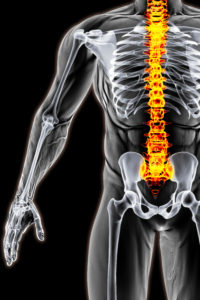
What is it?
Scoliosis and kyphosis are two diseases of the spine that produce abnormal bending and disfiguration. In its natural position, the spine has slight curves in the cervical, thoracic, and lumbar regions. The spine curves dorsally and ventrally, but does not have distinct lateral curves. Scoliosis is identified as a distinct lateral curvature, contrary to its natural dorsal and ventral positions. Kyphosis refers to excessive bending in the ventral and dorsal orientations. Children with kyphosis often have a very rounded back and are sometimes described as “hunchbacked”. Surgery for these conditions involve the placement of rods and screws to ensure that bones are correctly oriented and attached to the spine. Surgery may be necessary for patients with extreme curves in the back.
How to Prepare
As a child’s spine curvature is examined, doctors may run a series of imaging tests to provide an accurate visual of the spine. The patient’s doctor will decide if the curves are severe enough to permit corrective surgery. Preparations should be made at home to ensure optimal comfort for the patient, as it may be difficult for a child to move or sleep.
What happens during the procedure?
Depending on the location of the curvature, surgeons may choose to operate from the back or the front. If surgeons are operating from the back, incisions are made and skeletal muscle is peeled back to access the spine. If surgeons decide to operate from the front, then a rib may be removed to access the spine. Surgeons implant screws and rods to correct the curves and prevent further disfiguration. Bone grafts may be implemented into the spine to guide proper orientation. Some children may not receive bone grafts if there is a risk of terminated bone growth. After the corrections have been made and the rods or bone grafts are secured, the surgeon closes the wounds.
Risks and Complications
* Bleeding and infection
* Allergic reaction to medications
* Paraplegia
* Failure to stop curve progression
* Failure of the spine to fuse
* Rods or screws coming loose or not attaching properly
* Cerebrospinal fluid leak
Disclaimer:
All GlobeHealer Site content, including graphics, images, logos, and text, among other materials on the site are for educational purposes only. This content is not intended to be a substitute for professional medical advice, and you should always contact your physician or qualified health provider for information regarding your health. Information on this site regarding the overview, diagnosis, and treatment of any kind should be looked at, in addition to the advice and information of your health care professional. Do not disregard medical advice or delay seeking treatment or medical advice due to information found on the GlobeHealer site.
If there is even the possibility that you may have a medical emergency, seek treatment, call your doctor, or call your local emergency telephone number immediately. GlobeHealer does not endorse being the first line of communication in case of emergency and does not endorse any specific test, physician, facility, product, procedure, opinion, or other information that is or may be mentioned on this site or affiliated entities. Reliance of any and all information provided by GlobeHealer, its employees, affiliations, others appearing on the Site under the invitation of GlobeHealer, or visitors of the site is solely at your own risk and is not the responsibility of GlobeHealer.
